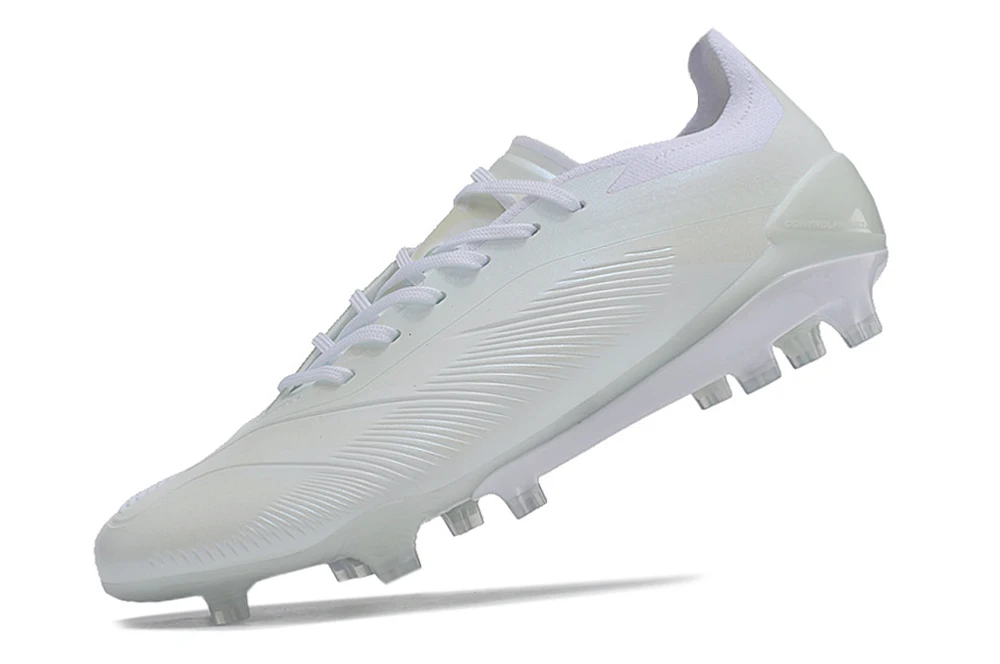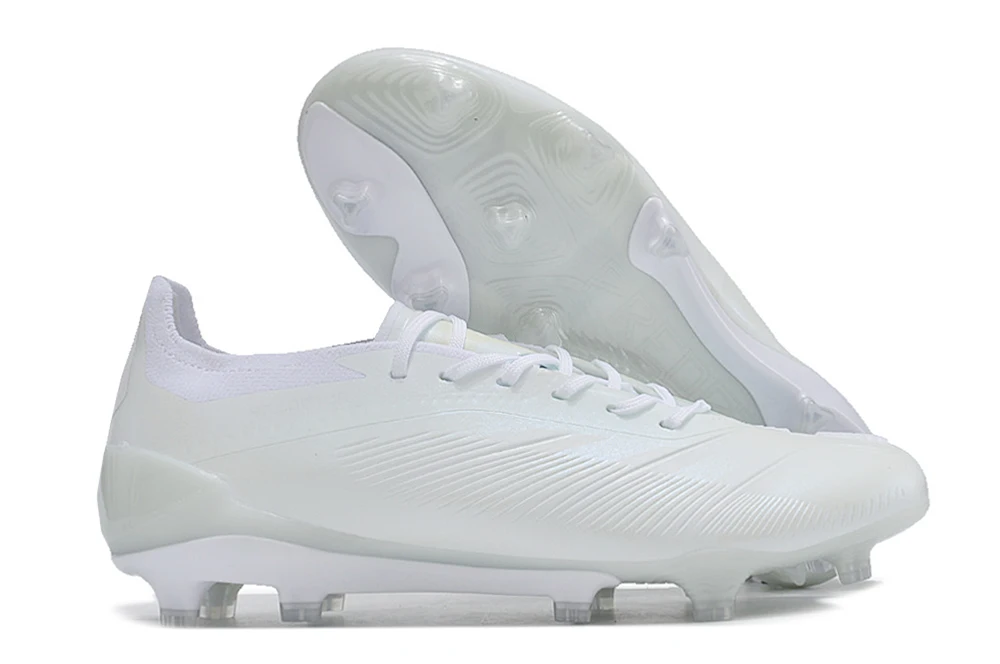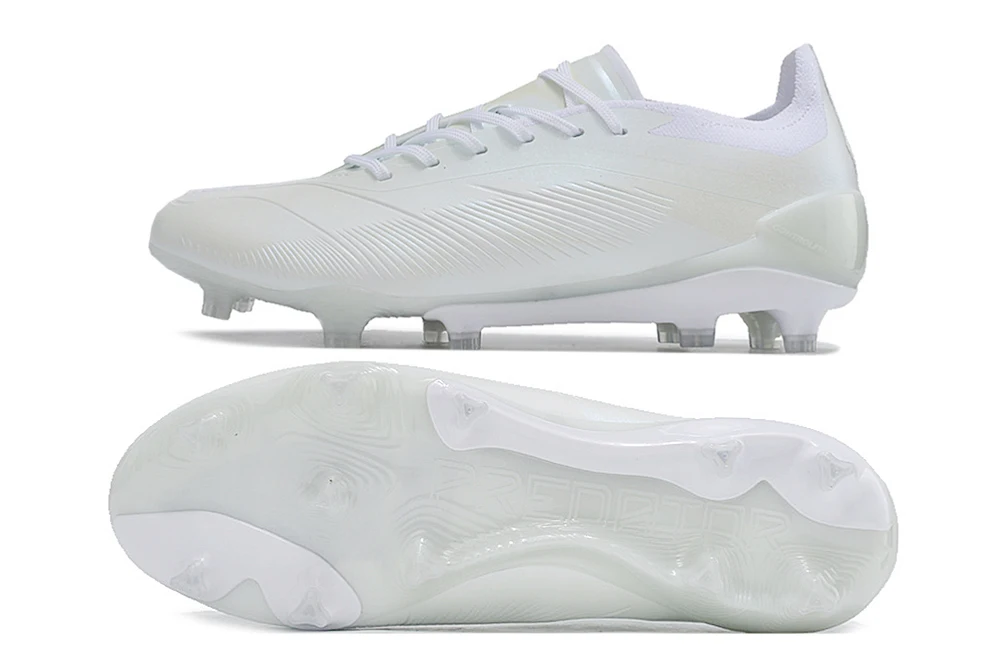Introduction
Adidas, a brand synonymous with sports excellence, has significantly influenced the football world. Among their many contributions, Adidas football boots stand out for their innovation, quality, and impact on the game. This deep dive explores the evolution of Adidas football boots, their technological advancements, iconic models, endorsements by legendary players, and their cultural significance.

The Beginnings of Adidas Football Boots
The Early Innovations (1940s-1960s)
Adidas was founded in 1949 by Adolf Dassler in Herzogenaurach, Germany. Initially, the company focused on producing a variety of sports shoes. However, it wasn’t long before they turned their attention to football boots. The innovation began with the introduction of screw-in studs, which allowed players to adjust their boots according to weather conditions and pitch surfaces. This adaptability provided a competitive edge and set the foundation for future developments.
The Birth of Modern Football Boots
The 1954 World Cup marked a significant milestone for Adidas. The West German national team wore Adidas boots featuring screw-in studs and clinched an unexpected victory against Hungary in the final. This triumph showcased the effectiveness of Adidas’ design and catapulted the brand into the global spotlight. This event is often cited as the birth of modern football boots, where functionality and performance became paramount.

Technological Advancements in Adidas Football Boots
The Evolution of Materials (1970s-1980s)
In the 1970s and 1980s, Adidas continued to innovate by experimenting with new materials. Leather remained the primary material, but advances in synthetic alternatives began to emerge. These materials offered greater durability and lighter weight, enhancing player performance. The Adidas Copa Mundial, introduced in 1979, exemplified this blend of traditional craftsmanship and modern technology. It became one of the best-selling football boots of all time, renowned for its comfort and performance.
The Predator Series: A Game Changer
The 1990s saw the introduction of the Adidas Predator series, which revolutionized football boot design. Launched in 1994, the Predator featured rubber ridges on the upper part of the boot, designed to increase swerve and power when striking the ball. This innovation gave players unprecedented control over their shots and passes. The Predator series garnered widespread acclaim and rapidly became a favorite among professional and amateur players alike.
Iconic Models and Their Impact
Copa Mundial: Timeless Classic
The Adidas Copa Mundial, released in 1979, remains one of the most iconic football boots ever made. Its timeless design, featuring kangaroo leather for superior comfort and touch, has stood the test of time. Many players favor the Copa Mundial for its classic look and reliable performance. Even decades after its release, it continues to be a preferred choice for footballers around the world.
Predator Precision: Precision Redefined
The Predator Precision, launched in 2000, took the Predator series to new heights. It incorporated improved rubber elements and a more refined design, providing even better control and accuracy. Legendary players like Zinedine Zidane and David Beckham famously wore these boots, further solidifying their status in football history. The boots’ ability to enhance precision and power had a profound impact on how the game was played, influencing both players and coaches.
Player Endorsements and Cultural Influence
Legendary Endorsements
Player endorsements have been a key strategy for Adidas in promoting their football boots. Over the years, numerous football legends have worn Adidas boots, further boosting the brand’s reputation. Pelé, Johan Cruyff, Franz Beckenbauer, and Michel Platini are just a few of the icons who have donned Adidas boots. More recently, modern stars like Lionel Messi, Paul Pogba, and Mohamed Salah have continued this tradition, showcasing the boots’ capabilities on the world stage.
Cultural Significance
Adidas football boots have transcended the sport, becoming cultural symbols. They represent more than just athletic footwear; they symbolize passion, dedication, and excellence. The brand has successfully blended sports and lifestyle, making their boots a fashion statement as well. From streetwear to high fashion, Adidas football boots have influenced various aspects of popular culture, reinforcing their status as an icon.
The Role of Technology in Adidas Football Boots
Innovations in Traction and Stability
Modern football requires boots that offer optimal traction and stability. Adidas has continually pushed the boundaries in this area. Technologies such as the SprintFrame outsole and hybrid stud configurations provide superior grip and stability, allowing players to perform at their best on different surfaces. These advancements reduce the risk of injuries and enhance overall player performance.
Enhancing Comfort and Fit
Comfort and fit are crucial for footballers, who spend hours training and playing matches. Adidas has invested heavily in research and development to create boots that fit like a second skin. Technologies like Primeknit, which wraps the foot in adaptive support, and Boost cushioning, which offers exceptional energy return, have transformed the comfort level of football boots. These features allow players to focus on their game without discomfort or distraction.

Sustainability in Adidas Football Boots
Eco-Friendly Materials and Practices
In recent years, sustainability has become a major focus for Adidas. The company is committed to reducing its environmental footprint and has introduced eco-friendly materials and practices in the production of football boots. Recycled plastics, organic cotton, and sustainable leather are now commonly used in their designs. Adidas also aims to achieve climate neutrality by 2050, emphasizing the importance of sustainability in sportswear manufacturing.
The Future of Sustainable Football Boots
Adidas continues to explore innovative ways to make their football boots more sustainable. Research into biodegradable materials and closed-loop recycling processes is ongoing. The goal is to create high-performance boots with minimal environmental impact. As the demand for sustainable products grows, Adidas is at the forefront of this movement, setting an example for the entire sportswear industry.

Conclusion
Adidas football boots have played a pivotal role in the evolution of the sport. From early innovations to modern technological advancements, they have consistently pushed the boundaries of performance and design. Iconic models like the Copa Mundial and Predator series have left an indelible mark on football history. Endorsements from legendary players and cultural significance have further cemented their status as an icon. Additionally, Adidas’ commitment to sustainability ensures that their legacy will continue to evolve in a responsible and forward-thinking manner. As the game of football progresses, Adidas football boots will undoubtedly remain at the forefront, driving innovation and excellence on and off the pitch.

